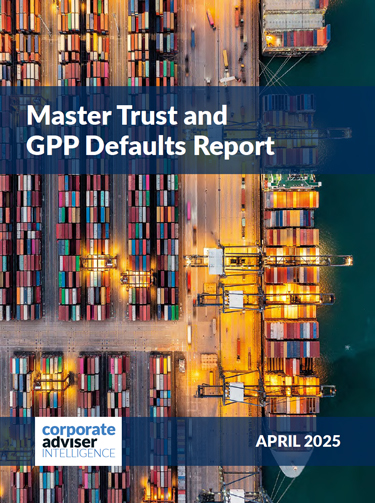Integrating the Alexander Forbes business, sussing out which providers to work closest with and digesting pension reform and the RDR are all challenges in the inbox of JLT Benefit Solutions’ new chief executive Mark Wood, who has just taken the seat vacated by Duncan Howorth. But for Wood, whose career has included UK CEO roles at both Axa and Prudential, as well as setting up Paternoster, the biggest challenge of all remains the ever increasing cost of providing for retirement.
His experiences in the longevity business have left him in no doubt as to the challenges facing us all. They are, after all, the same challenges that face many of the insurance companies he has worked for – increasing longevity and investment returns that have struggled to stay positive in real terms.
“It is extraordinary enough that the average life expectancy of a 35-year-old is 100. But what is perhaps more extraordinary is the increase in life expectancy per day. On the basis that life expectancy increases each decade by about 20 per cent, we are seeing a five or six hour a day increase in life expectancy. Which means I am coming to work and leaving younger than when I arrive.
“That is fantastic of course. But if you take that statistic and look at a negative real return on annuity rates, the idea of people being able to make a reasonable income off a pot of money at 55 or 60 is fundamentally flawed,” he says.
For Wood, the sheer cost of provision is the factor that presents the biggest risk to the success of the auto-enrolment reforms.
“The fundamental issue with auto-enrolment is we won’t know how successful it has been until 2022/23 when we do the review and we look at whether we need to take the step into compulsion or not.
“But the problem we are going to face is if we don’t move out of this low real return environment then the amount people are going to accumulate in their auto-enrolment pots will give them a false sense of security. There is a moral hazard. You breath a sigh of relief and say you’ve taken care of your pension but you haven’t,” says Wood.
Wood points out that the reality remains that state pension will be the main component of most people’s income for some time to come.
“We were looking at the autumn statement the other day and the adjustment of the state pension up to £110.15 and you work out what you would need as a pot to achieve that, for a level single life the cost is £195,000. When you think that the average cost of a house is £225,000 the state pension has all of a sudden become a very valuable asset, yet we all discount it as irrelevant,” he says.
Wood sees communication and development of employees’ understanding of the challenges they face as essential to giving people the tools to be able to manage the final third of their life in a fulfilling way.
“So a key issue with auto-enrolment is people understanding how long they are going to live for and how they are going to understand what their capital will buy them in a defined contribution world. As we come out of the tailwinds of this period of financial turmoil we have been in, unquestionably we are going to have a long period when real returns are very low if not negative. And that really debunks the idea of building up a chunk of money and living off an income flow or dividend yield.
So people have to think afresh about how they are going to achieve a longer working life,” he says.
“When I was at the Prudential we did the first pilots for auto-enrolment for Ford Motor Company in Dagenham. That was in 2003, a decade ago. We demonstrated that with good presentations, good seminars, good demonstrations and good illustrations you could get people to understand why they were saving. We are now at the launch point and the big schemes are on board. But it will be a long time before we know whether there has been a pick-up,” he says.
But with communication and engagement programmes such a big part of taking employees beyond 8 per cent, what does Wood make of the RDR generally and specifically in the workplace, the potential prohibition of consultancy charging for auto-enrolment schemes?
“We have to think about individual clients and corporate clients separately. The RDR is very straightforward. It simply changes the signature of the income on the account. You go from a position where an arrangement for a client would yield a lump sum commission in relation to either a lump sum transaction or a stream. All that has happened is the amount of that initial payment has come down and we have regularised the concept of trail commission so the length of the contract is reflected in remuneration that the adviser receives. And it is axiomatic that the adviser is provided with an income for reviewing the investments that the individual holds and having some form of maintenance arrangement with the client on an ongoing basis,” says Wood. “That seems to me entirely logical. There is clearly going to be a period of digesting these different cashflows.
“There will be many advisers who will have been preoccupied with getting the lump sum commissions in up to January 1, and there are others, and Hargreaves Lansdown would be the extreme example, where they have managed to adjust their remuneration so the bulk of their income is secure from January 1 because they have a massive proportion of trail commission that comes through that reflects the bank of clients they hold. The model will move in that direction and there will be a process of digesting that and we will move in that direction.”
And how should the RDR impact on the group side?
“Under a corporate environment I think consultancy will continue to form a large part of people’s remuneration, but what is happening there is we are disaggregating what the adviser is doing for the client and we are saying by its nature some of that work is design and construction and other parts of the work are putting products in place. And where the product is put in place the payment reflects the fact that a product has been put in place and where there is design work it is appropriate to pay a consultancy fee out of the pot,” says Wood.
“When you look at auto-enrolment and the way the charges affect the contribution, and the DWP is absolutely right to be looking at this because the effectiveness of the schemes is based on very low operating costs and, contributions are so low anyway so a position where the charges are depleting the fund even further is not sustainable. That process needs redesigning,” he says.
And so what about the problem for fund-based consultancy charges that can take contributions below the auto-enrolment minimum?
“That is clearly not acceptable. Should we have a minimum charge and then a band where it is variable with a cap? I think that is where the debate is going to move to,” he adds.
So we could end up with occupational schemes able to take money out of schemes with no FSA intervention, yet GPPs cannot?
“Your question highlights what has been a problem in the pensions industry for years which is that the regulatory structure in general has TPR and the DWP on one side of the line and the other side is monitored by the FSA. And ETVs would be another example. The FSA has latterly become interested in ETVs but TPR has been looking at ETVs for some years. The two collide at some point. I suggest that gets us to something that is a more authoritative structure from the DWP that oversees the whole structure,” he says, adding that could conceivably lead to regulation of charges in the trust-based world.
So what was the logic behind the acquisition of Alexander Forbes Financial Services, which received regulatory approval at the end of last year?
“We see the need to serve three portions of the market – defined benefit, defined contribution and individuals who are taking money out of their DC schemes and drawing down or annuitising, and in that third box, advising individuals as they build up their Sipps and make fund selections in their DC schemes.
“We are immensely strong in the DB area. We cover the whole waterfront with our services. But if you look at our revenue we are DB-dominated. Alexander Forbes balances our DC with our DB.
Secondly, we have a very strong offering to individuals. Alexander Forbes will supplement that, advising senior management within DC clients. And in mainstream consulting, Forbes will also supplement our offering. So it is a perfect overlay on that middle part of our strategy,” he says.
And will we see JLT following other big EBCs into a multi-tie model tied to three providers? Wood hints at a possible announcement in the future.
“I think we are philosophically whole of market. We have just had a big debate about mid-range pots in the annuity market and whether there is a legitimate structure to be offered there or not. If you do restrict the range of people you deal with you do it in a way that does not restrict the service to the client. I am not sure we see the need to cover the absolute full range of providers and therefore you may well see us think about a restricted offering. But the criteria we apply when doing that will be making sure we are maintaining our offering to our clients,” he says.
And how many providers might that involve restricting to?
“We have not announced anything yet and this is not the time to announce it, but I think I have given you the philosophy behind what we are thinking,” says Wood.
JLT launched its diversified growth fund to the wider market through the Aegon platform in November, a move Wood sees as a sensible use of its existing DB expertise in the DC world.
“We run a tactical allocation and strategic asset allocation unit both for the big DB schemes and the DC funds and this is another way of using that same intellectual property,” he says.
Wood sees its technological expertise as a key differentiator.
“The big area of development for us is around Benpal, which is a revolutionary tool that sits on phones in peoples’ hands and it enables people to start to visualise what their pension pot can achieve,” he says.
“We are all becoming so familiar with what you can achieve with these little gems of technology that we all have in our pocket. If you can take something as arcane as pensions and give people a tool that they have in their hand all the time then we just have a chance of transforming the way they think about planning for the future. That is the big vision for Benpal.
“It also takes us into many more markets globally.”
Ask Wood what he wants to achieve at JLT and he is suitably modest, saying he will be very pleased to maintain the standards set by Duncan Howorth, who has become CEO of JLT Asia.
But ask him whether the Forbes acquisition means JLT Benefit Solutions is still the fourth biggest firm in the UK and his competitive streak is revealed. “If you look at the quality of service we provide, take Benpal, which is unquestionably a market leader, and I think we are number one in auto-enrolment, and are massively competent in providing administration to defined benefit schemes. So you have to break it down and look at the components.
But if you use the crude and facile way of measuring by gross revenues then, yes, you could draw that conclusion.”




